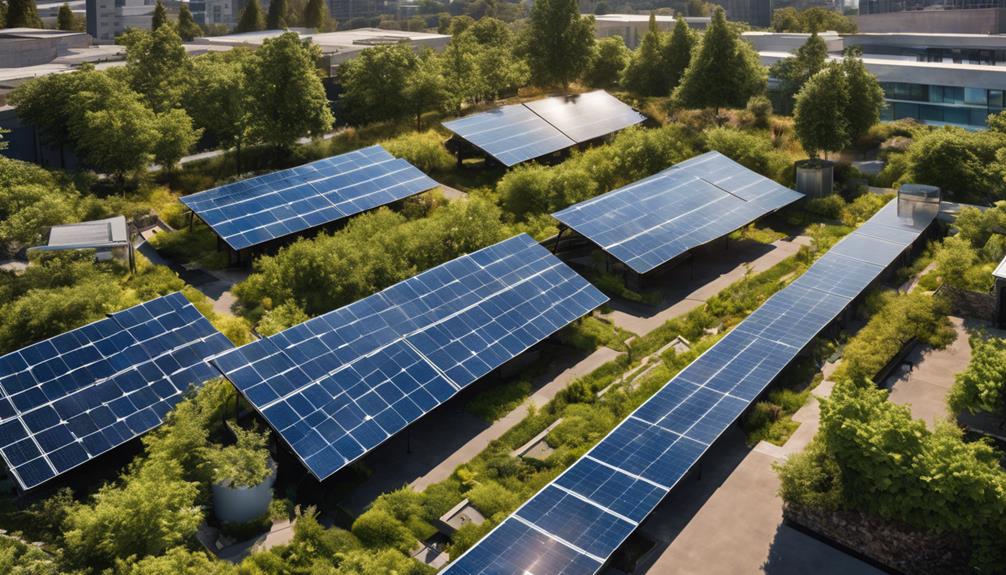
In recent years, renewable energy has gained significant traction in the quest for sustainable living. Among the various innovations in solar technology, triangular solar panels have emerged as a unique solution that combines efficiency with aesthetic appeal. In this blog post, we will delve deep into the world of triangular solar panels, exploring their benefits, applications, and how they might shape the future of solar energy.
What are Triangular Solar Panels?
Triangular solar panels are a unique variation of traditional solar panels, designed in a triangular shape instead of the standard rectangular format. This innovative design maximizes space utilization and enhances energy capture. By optimizing the angle of sunlight exposure, triangular solar panels can often achieve higher efficiency rates compared to conventional panels. Their shape allows for unique installation configurations, making them suitable for various environments, from urban rooftops to rural landscapes.
The Advantages of Triangular Solar Panels
One of the most significant benefits of triangular solar panels is their space efficiency. Because of their triangular shape, these panels can fit into unconventional spaces that traditional rectangular panels cannot. This is particularly advantageous for urban settings where roof space may be limited or irregularly shaped. Moreover, triangular solar panels can be arranged in various configurations, allowing for creative designs that can enhance the overall aesthetic of a building or installation.
In addition to aesthetic and spatial benefits, triangular solar panels may also provide improved energy efficiency. The design allows for better light capture during different times of the day, optimizing energy production. This can lead to higher energy yields, reducing reliance on fossil fuels and contributing to a more sustainable energy future.
How Do Triangular Solar Panels Work?
Triangular solar panels function similarly to traditional solar panels, using photovoltaic (PV) cells to convert sunlight into electricity. The triangular shape does not inherently change the photovoltaic process; rather, it alters the way light is captured. By positioning the panels at optimal angles, they can harness sunlight more effectively, especially during mornings and late afternoons when the sun is lower in the sky.
These panels can be mounted on rooftops, integrated into building designs, or utilized in solar farms. Their versatility in installation options allows for innovative applications in both residential and commercial settings. Additionally, triangular solar panels can be paired with energy storage systems, enabling users to store excess energy generated during peak sunlight hours for use during cloudy days or nighttime.
Applications of Triangular Solar Panels
Triangular solar panels are gaining popularity across various applications. In urban environments, they can be installed on rooftops, providing an excellent solution for buildings with limited space. Their unique shape allows them to be integrated into modern architectural designs, making them an attractive option for new constructions and renovations.
In rural areas, triangular solar panels can be used in agricultural settings, providing power for irrigation systems and other farm operations. Additionally, they can be part of larger solar farms, where their unique configuration can optimize land use and enhance energy production. Furthermore, triangular solar panels can also be utilized in off-grid applications, offering energy solutions for remote locations.
Cost-Effectiveness of Triangular Solar Panels
While the initial investment in solar technology can be substantial, triangular solar panels may offer long-term savings that outweigh the upfront costs. Their efficient energy production can lead to lower electricity bills, making them a cost-effective solution over time. Additionally, many governments and organizations offer incentives for renewable energy installations, further reducing the financial burden on consumers.
As the technology continues to evolve, the manufacturing costs of triangular solar panels are likely to decrease, making them more accessible to a broader audience. With increasing awareness of climate change and the importance of renewable energy, more homeowners and businesses are considering solar solutions, and triangular solar panels could play a significant role in this transition.
Environmental Impact of Triangular Solar Panels
Triangular solar panels contribute positively to the environment by reducing reliance on fossil fuels and lowering greenhouse gas emissions. By harnessing solar energy, these panels help decrease the carbon footprint of energy production. Moreover, their efficient design ensures that they can generate more power per square foot compared to traditional solar panels, further enhancing their environmental benefits.
The adoption of triangular solar panels can also encourage sustainable practices. As more individuals and businesses recognize the importance of renewable energy, the demand for such technologies grows. This shift not only supports the environment but also stimulates the economy by creating jobs in the renewable energy sector, from manufacturing to installation.
The Future of Triangular Solar Panels
As research and technology in the solar energy sector advance, the future of triangular solar panels looks promising. Innovations in materials and manufacturing processes could lead to even more efficient and cost-effective designs. Additionally, as urbanization continues to rise, the demand for space-efficient energy solutions like triangular solar panels will likely increase.
Moreover, the integration of smart technology with solar panels is on the rise. Smart grids and energy management systems can optimize energy use and storage, making triangular solar panels even more effective. As these technologies converge, we can expect to see a significant transformation in how we harness and utilize solar energy.
Conclusion: Embracing the Innovation of Triangular Solar Panels
In conclusion, triangular solar panels represent a significant innovation in the renewable energy landscape. With their unique design, they offer numerous benefits, including space efficiency, enhanced energy capture, and aesthetic appeal. As we continue to seek sustainable energy solutions, triangular solar panels stand out as a viable option for both urban and rural settings.
As technology evolves and the demand for renewable energy grows, embracing innovations like triangular solar panels will be crucial for a sustainable future. By understanding their advantages and applications, we can better appreciate the role they will play in our transition to cleaner energy sources. If you’re considering solar energy for your home or business, triangular solar panels may just be the perfect solution for your energy needs.





